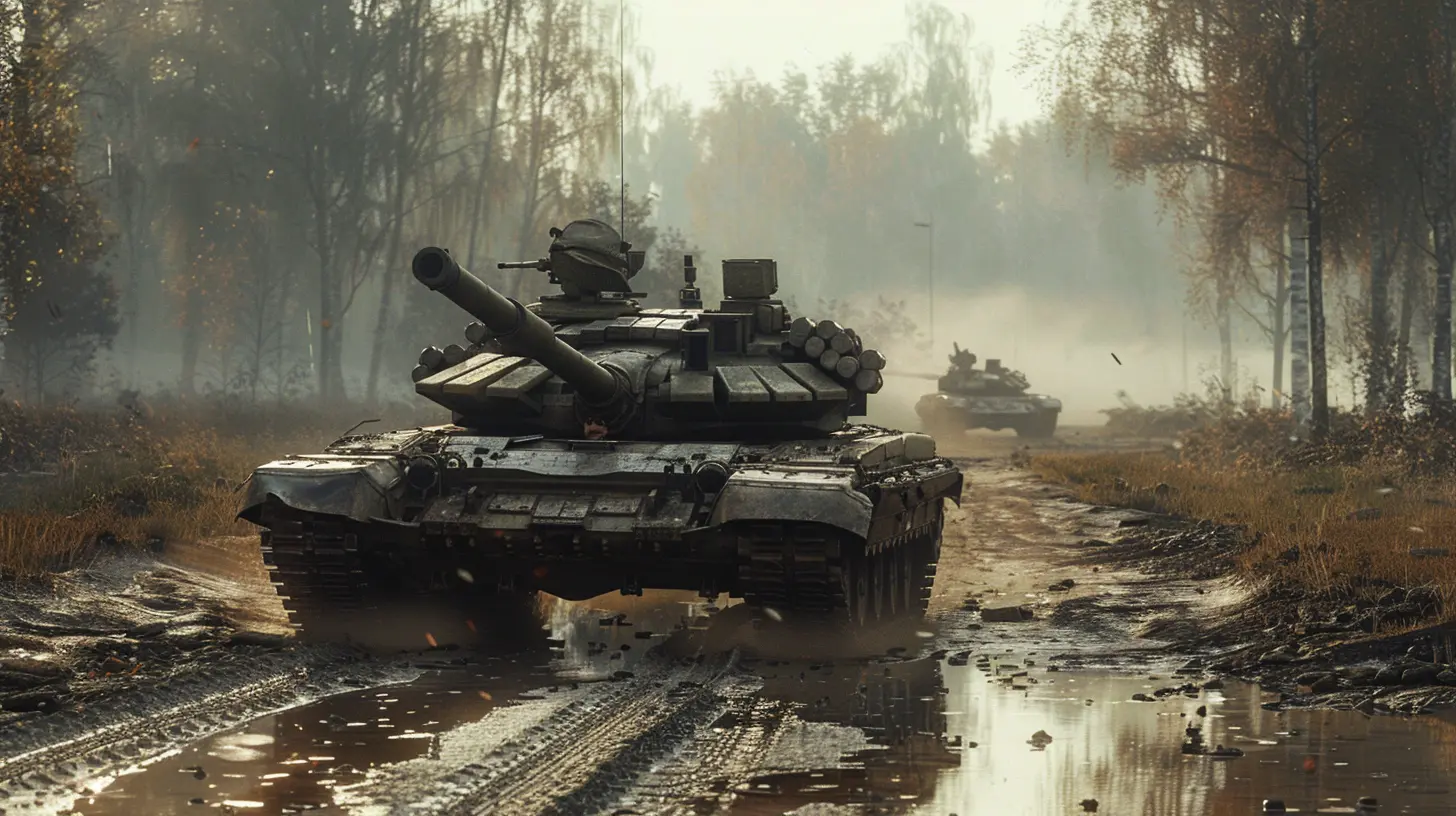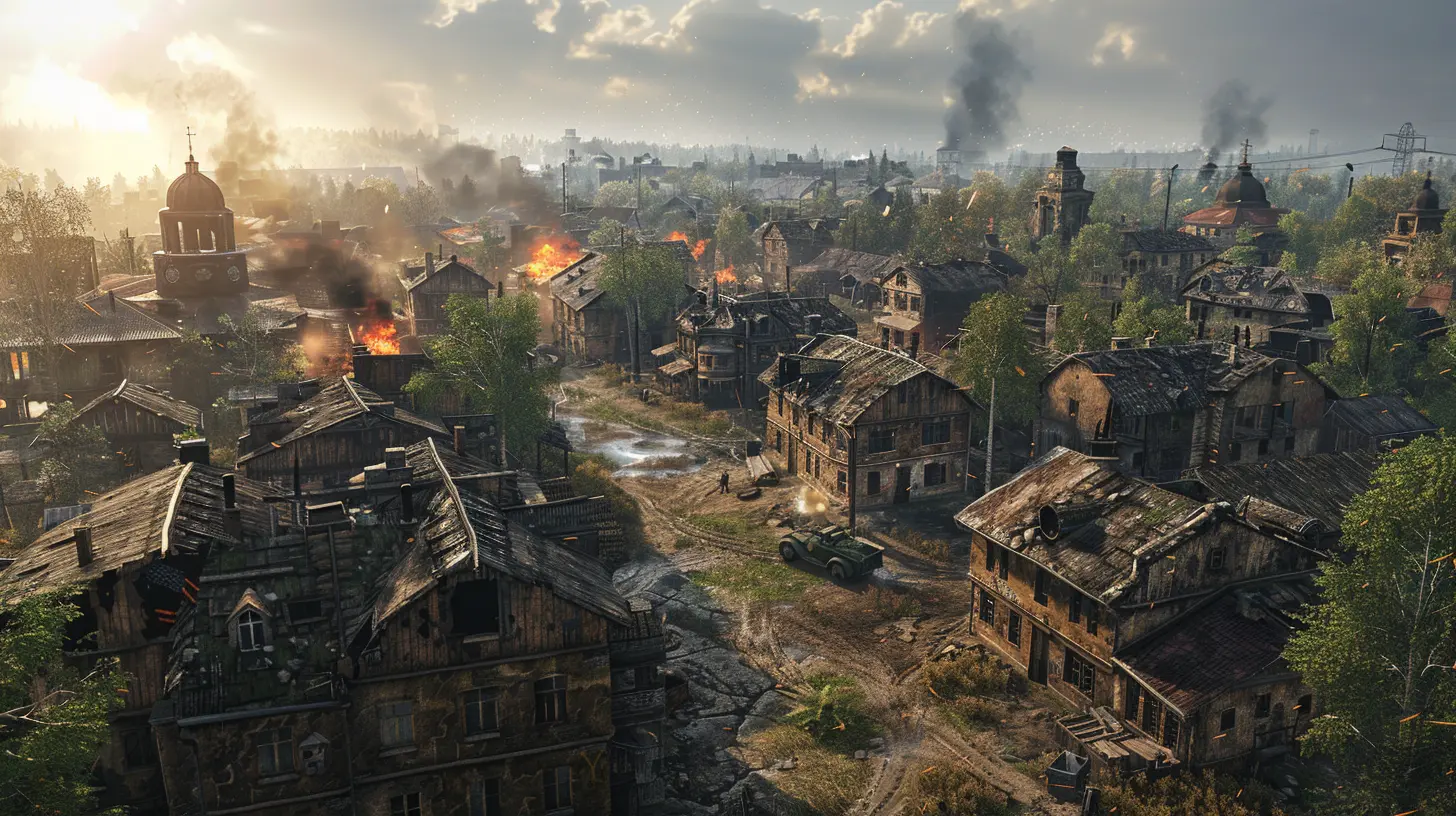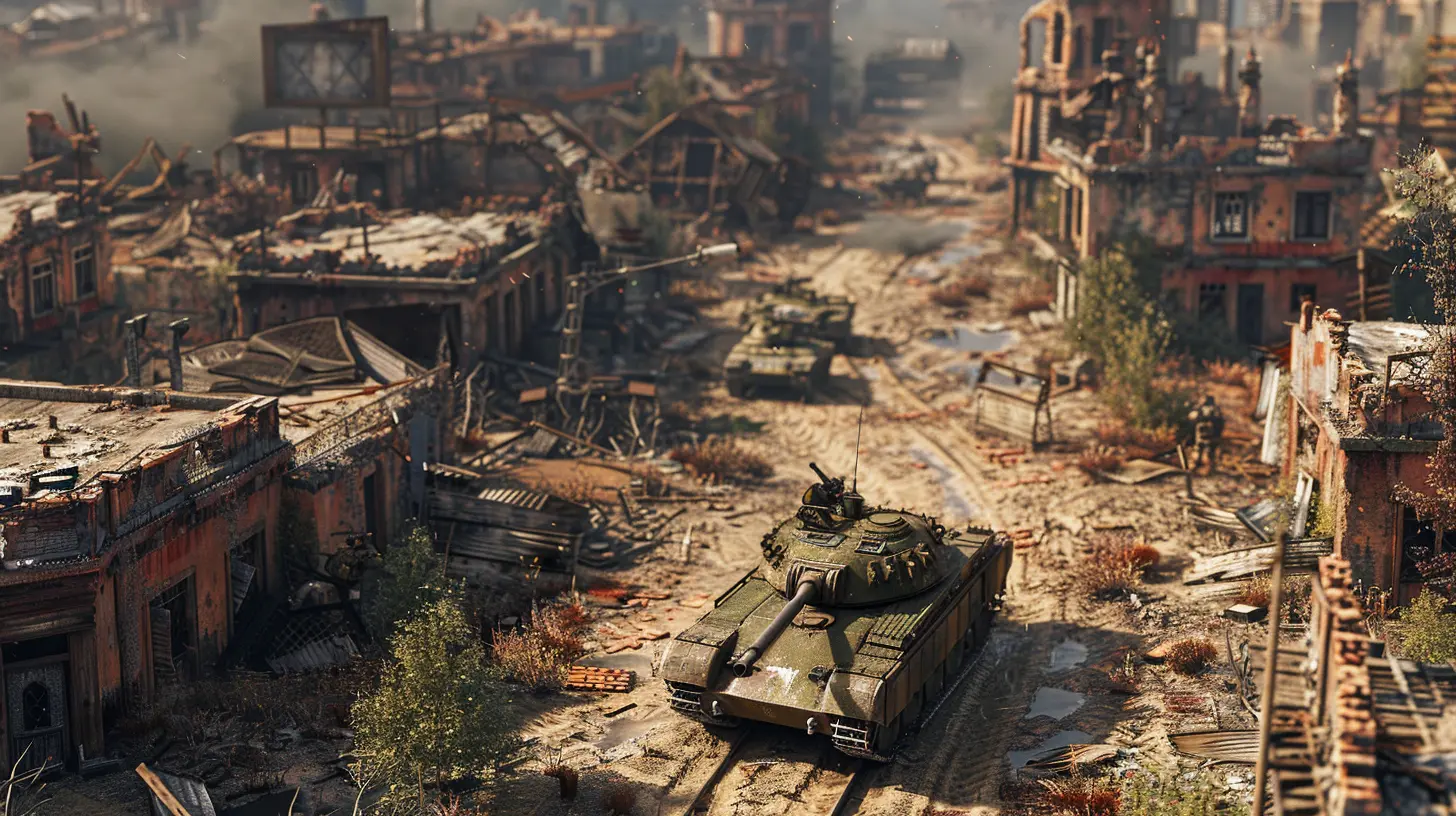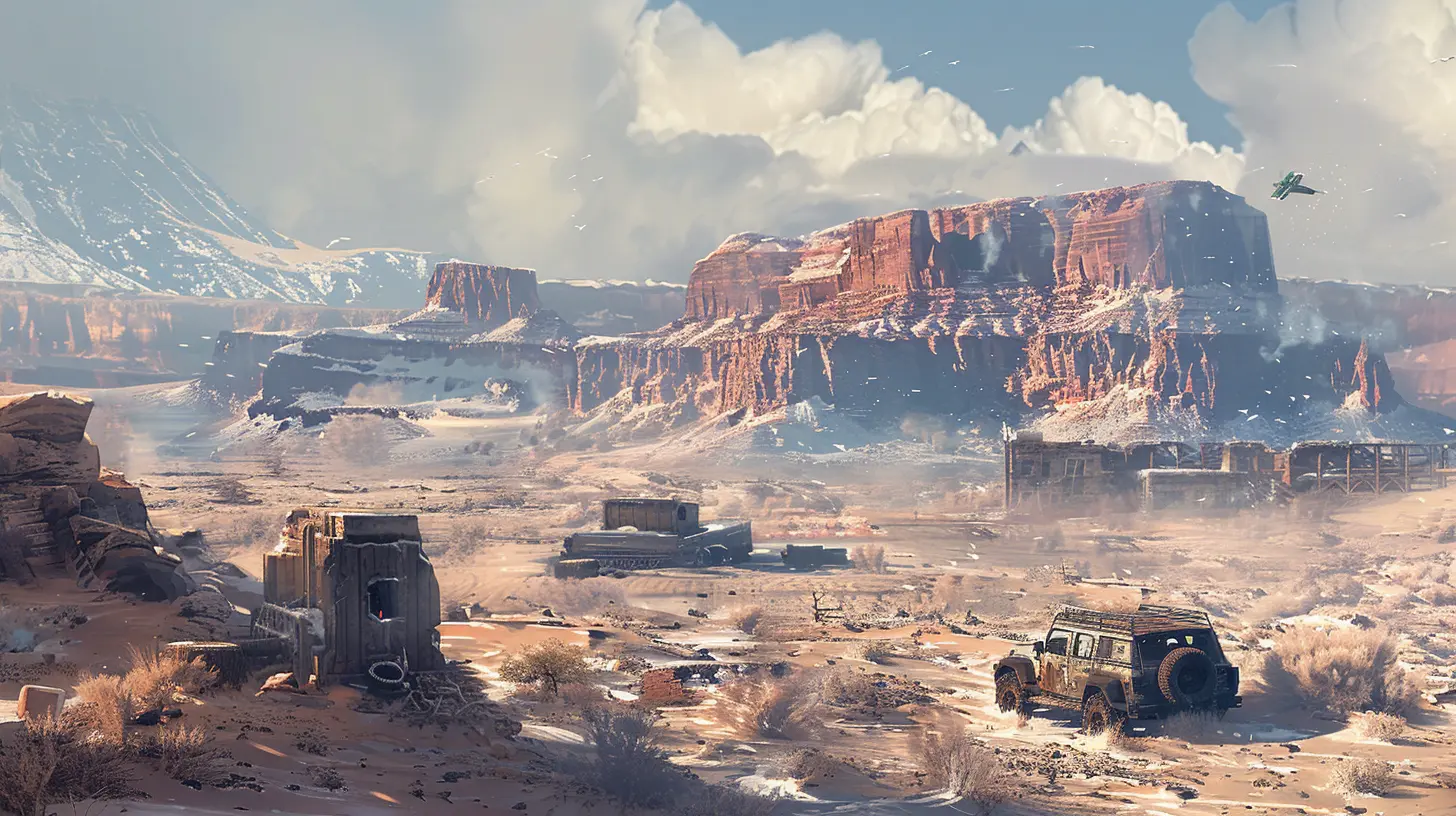Behind the Scenes: Creating Authentic War Zones in Games
6 June 2025
Ever wondered how video games make war zones feel ridiculously real? Like, you’re crouching in cover, bullets whizzing past, feeling your palms sweat even though you’re just safe at home? That’s not a coincidence—it’s a highly detailed, behind-the-curtain process that studios spend countless hours perfecting.
Creating lifelike war environments in games isn’t just about cool explosions and gritty visuals; it’s about storytelling, emotion, and authenticity. Today, we’re diving deep into the world of game development to see exactly how developers pull off this massive feat—how they create war zones that feel like real battlegrounds.

The Obsession with Authenticity
Okay, so here's the thing: gamers can tell when something feels fake. One awkward animation or weird sound and bam, immersion broken. That’s why developers obsess over realism when crafting war zones. And we’re not just talking about visuals—we’re talking about sound, narrative, atmosphere, and player behavior too.The Real War for Realism
Let’s be honest, most of us have never been in a real war (thankfully). But veterans and history buffs often play military games, and they notice when things are off. That’s why developers often work with military consultants, former soldiers, and historians. They get input on everything—from what a soldier’s gear should look like, to proper squad movements, to what a battlefield might smell like (yes, game designers think about that too, even if you can’t smell it through your screen).Accuracy vs. Fun: The Tricky Balance
Now, complete realism would probably make a game boring or even frustrating. Real warfare isn't always fast-paced or action-packed. So developers have to decide: what do we keep, and what do we tweak for gameplay's sake? It’s a constant balancing act between keeping the game engaging while not turning it into a Michael Bay flick with no substance.
Research is the First Weapon
Before code is written or assets are modeled, tons of research happens. This isn’t the lazy kind of research where someone scrolls a Wikipedia article. We’re talking boots-on-the-ground kind of stuff.Studying History and Locations
Game worlds take inspiration from real battles and real places. Developers pour over maps, photos, drone footage, war records—you name it. Want to recreate the look and feel of Normandy on D-Day? You better believe they’ll examine every inch of that beach. And if the game is set in modern times, guess what? Developers might even visit actual conflict zones (with proper permissions, of course) to study terrain, architecture, and even how destruction affects environments.Interviewing Survivors and Experts
This part is powerful. Developers often sit down with veterans who’ve actually seen combat. They ask about how it felt—what sounds they heard, what they saw, and how they coped. These insights shape everything from the ambient noise in games to how soldiers interact with each other.
Bringing War to Life Visually
This is where it gets really interesting. Graphics always get the spotlight when it comes to video games, but in war games? They’re on another level. Creating realistic war zones is like painting chaos with pixels. Let’s break it down.Photorealism: The Benchmark
Games like Call of Duty, Battlefield, and Hell Let Loose have pushed photorealism to new heights. Developers use real-time lighting, ray tracing, and ultra-detailed textures to make every scene look like a snapshot from a war documentary.Imagine a ruined city: cracked pavement, blown-out windows, dust hanging in the air. The goal? Make it feel like a war zone even when nothing’s happening. The world itself should tell a story.
Procedural Destruction
War isn’t tidy—and neither are modern video games. Procedural destruction systems allow environments to fall apart dynamically. Shoot a rocket at a building, and it crumbles differently every time. This adds not just realism, but strategy. Your cover might not be safe after all.Environmental Storytelling
You walk through a bombed-out school. Kids’ drawings still on the walls. A broken wheelchair in the hallway. It’s haunting, right? That’s no accident. Developers use environmental storytelling to make you feel like you’re in a real, lived-in world. These quiet moments often speak louder than the firefights.
Crafting the Sounds of War
If visuals are one half of the equation, sound is the other. Honestly, sound might be the bigger deal. Ever noticed how a distant explosion can make you flinch—even though you know it’s a game?Recording Real Weapons
No joke. Sound designers actually go out and record real gunshots, explosions, and vehicles. They need the right echo, the right metallic clink of a shell hitting the ground. Sometimes they’ll even simulate sounds in massive open spaces to get the reverb and atmosphere just right.Dynamic Soundscapes
Sound in war games needs to react to what’s happening. That means layered audio systems where sound changes depending on location (inside a building vs. open fields), weather (rain dulls gunfire), and even player status (blood pumping in your ears when low on health).Psychological Impact
Good sound design isn’t just about realism—it’s about emotion. High-pitched tinnitus when a grenade goes off nearby? That’s not just for effect. It draws you into the chaos. Low, ominous music in quiet moments? That builds tension like crazy.AI and Soldier Behavior
You don’t just need your environment to feel real—you need every character in that world to behave authentically too.Programmable Tactics
AI-controlled soldiers in modern war games don’t just run at you like maniacs (unless they’re zombies... different game). Instead, they take cover, call for backup, flank you, and retreat. Developers base this stuff on real military tactics, programming decision trees and behavior modules that mimic how actual squads operate.Emulating Human Reactions
Think about fear, adrenaline, confusion. Some advanced AI systems try to simulate those emotions. Soldiers might panic if cut off, hesitate when ordered into danger, or react differently depending on their health or morale status.
Multiplayer: Making War Personal
When you bring human players into the mix, everything changes. That’s why many war games focus so heavily on immersion, especially in multiplayer modes.Communication is Key
Real war zones rely on solid communication—and the best war games mirror that. Integrated voice chat, ping systems, and squad commands help players feel like they’re part of a unit, not just lone wolves.Teamwork-Driven Gameplay
Games like Squad and Arma take it a step further by making teamwork essential. Medics, engineers, and squad leaders all play different roles. Without coordination, you’re toast—and nothing screams realism like being totally dependent on your team to survive.Morality and Narrative: War is More Than Guns
War isn’t just about fighting. It’s about people, politics, and pain. Developers are increasingly weaving real human stories into their games.Moral Complexity
Gone are the days of black-and-white good vs. evil. Now, war games ask hard questions: What happens when a mission feels wrong? Do you follow orders or your conscience? Games like Spec Ops: The Line and This War of Mine dive deep into these themes, forcing you to face uncomfortable truths.Civilian Perspective
Sometimes, the most powerful war stories aren’t told from behind a rifle. Games that explore civilian experiences, like Valiant Hearts, show the cost of conflict without combat. It’s a gut punch—in the best way.
The Future of Authentic War Zones
So where are we headed next? With tech like VR and AI advancing like crazy, you can bet we’re on the brink of even more immersive war zones.Virtual Reality Will Change Everything
Imagine being in the battlefield, rather than just staring at it through a monitor. VR adds a layer of physicality and spatial awareness that’s mind-blowing. Games like Medal of Honor: Above and Beyond are already testing the waters.AI-Generated Worlds
Procedural generation isn’t new, but with smarter AI, we might see fully realistic war zones created on the fly. That means unpredictable, ever-changing environments that still feel grounded in reality.The Rise of Tactical Simulations
We're seeing more studios focusing on realism-first designs. Think hardcore mil-sim titles that prioritize communication, realistic ballistics, and slow gameplay over flashy kills. This niche is growing—fast.Final Thoughts
Creating authentic war zones in games is an art form. It’s not just about looking cool (though that’s part of it). It’s about honoring real experiences, telling meaningful stories, and making players feel something. Next time you dive into a mission, take a second to appreciate the insane amount of detail behind every bombed-out building, every scream in the distance, every flicker of light filtered through smoke.It’s more than a game. It’s a window into the chaos of war—and the meticulous brilliance of the people who recreate it for us.
all images in this post were generated using AI tools
Category:
War GamesAuthor:

Leif Coleman
Discussion
rate this article
3 comments
Garrett Gates
This article beautifully highlights the challenges and dedication involved in creating authentic war zones in games. It's fascinating to see how developers balance realism with gameplay, ensuring a respectful representation while still providing an engaging experience. Thank you for shedding light on this important aspect of game design!
June 19, 2025 at 3:28 AM

Leif Coleman
Thank you for your thoughtful comment! I'm glad you found the balance between realism and gameplay intriguing—it's a crucial aspect of our craft.
Myles Klein
Creating authentic war zones in games is not just about realism; it's about honoring the sacrifices of those who fought. By immersing players in these experiences, we foster understanding and empathy. Let’s continue to push boundaries and craft narratives that resonate deeply with both players and history.
June 17, 2025 at 2:56 PM

Leif Coleman
Thank you for highlighting the importance of authenticity in war game narratives. It's essential to balance realism with respect for the sacrifices of those who served, fostering empathy and understanding through immersive experiences.
Zaid Newton
Who knew pixelated mud could spark so much realism? If only my lawn could handle a dramatic airstrike—imagine the watering schedule! 🎮💣 #VirtualBattlefield
June 12, 2025 at 3:43 PM

Leif Coleman
Glad you enjoyed the realism! It's fascinating how details like pixelated mud can enhance immersion in virtual worlds. Thanks for your comment! 🎮



